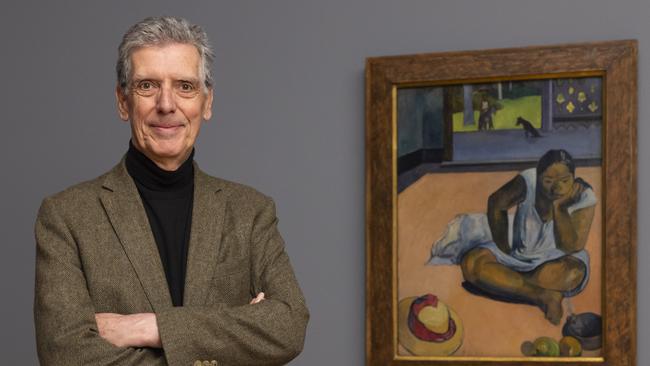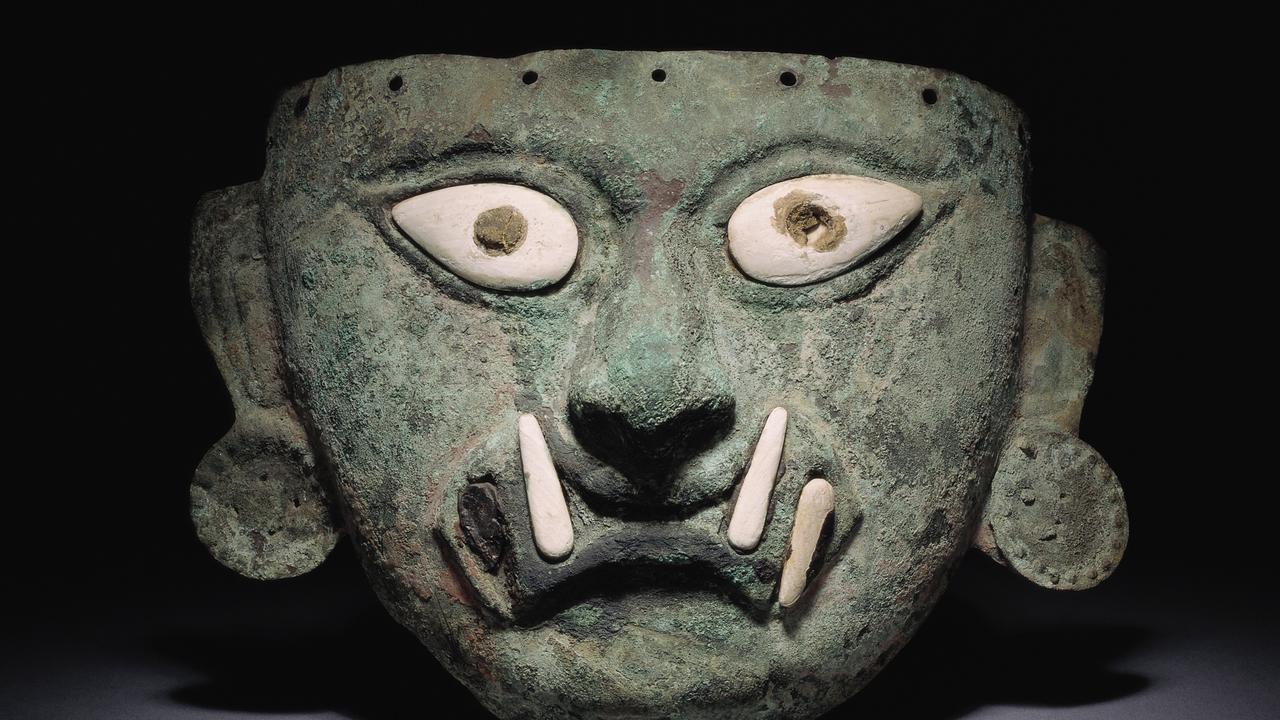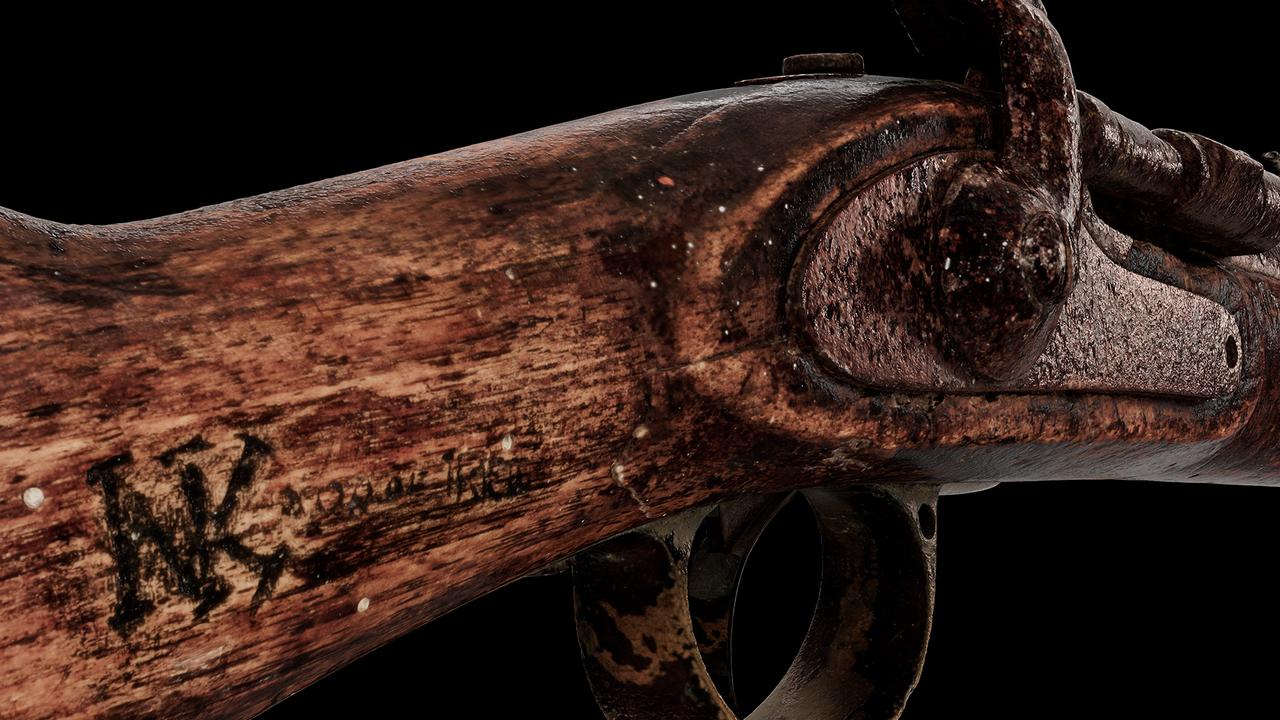Life in reverse: NGA blockbuster Gauguin exhibition begins at his lonely end
The National Gallery of Australia’s Gauguin blockbuster is the first exhibition to focus on the French master’s Oceania period.

Paul Gauguin’s lonely, disease-riddled death in the Marquesas Islands in 1903 is a central part of the French artist’s legend that underpins a groundbreaking exhibition of his art at the National Gallery of Australia in Canberra.
Gauguin’s final painting, titled Portrait of the artist by himself (Portrait de l’artiste par lui-meme), 1903, normally hangs in the Kunstmuseum, Basel, in Switzerland. It is one of more than 130 loans from 65 public and private collections – including works from the Musee d’Orsay in Paris and the Kunsthaus in Zurich – that were snared for the NGA exhibition, Gauguin’s World: Tona Iho, Tona Ao.
Curated by one-time director of the fabled Louvre museum in Paris, Henri Loyrette, this blockbuster exhibition opens its doors to the public on Saturday.
“This is the first exhibition devoted to Gauguin and Oceania, a survey of his entire corpus as seen from his final destination, the Marquesas,” Loyrette said.
“When Gauguin landed in the Marquesas in September 1901, he knew that he had reached his journey’s end. He had at last found his ‘true homeland’ – the place to which he had aspired.”
The exhibition brings together paintings, drawings, engravings, sculpture and items of the decorative arts to tell the story of Gauguin backwards – starting from that final, honest portrayal and journeying back through Tahiti, Martinique, Brittany, Paris and Peru, where Gauguin spent his early childhood.

An intriguing story is attached to Portrait of the artist by himself. It says that one of the artist’s closest friends on the Marquesan island of Hiva Oa, an exiled Vietnamese political agitator called Nguyen Van Cam, sought to cheer up Gauguin by playfully starting the portrait.
Gauguin is supposed to have leapt out of bed, shoved Van Cam aside, and finished the portrait himself. Loyrette wants to believe the story, but he doesn’t.
“The thin, fluid paintwork shows no sign of a new start or pentimento,” Loyrette writes in the exhibition catalogue. “The blue line that covers the shoulders, outlines the neck of the shirt and emphasises the right profile of the face in the manner of a beginner establishing his composition might perhaps be questioned. But the fact is that Gauguin, so attentive to his own image, gives us here his final self-portrait.”
Gauguin gave the portrait to Van Cam (1875-1929), who also acted as the artist’s nurse and was known as Ky Dong. (Gauguin suffered from a litany of ills, from syphilis to severe eczema.)
In 1905, Ky Dong gave the portrait to Louis Grelet, a liquor dealer who was also friends with Gauguin in the Marquesas.

In 1924, Grelet sold the picture through Sotheby, Wilkinson and Hodge in London. The buyer was Swiss-born Louis Francis Ormond who in 1891 married Violet Sargent, the beautiful sister of artist John Singer Sargent.
In 1928, Ormond sold the painting to a Dr Karl Hoffmann, who in 1945 bequeathed it to the Kunstmuseum, where it usually hangs to this day.
As the exhibition was installed at the National Gallery of Australia, it was fascinating to note the cast of famous characters who shepherded Gauguin’s artistic legacy through to the present day.
One-time owners of works in the show include Campbell Dodgson, former keeper of prints and drawings at the British Museum (and a distant relation of Lewis Carroll), 19th century uber-dealers Ambroise Vollard and Paul Guillaume, American oil heiress Marion Koogler McNay, French artist and curator Gustave Fayet, American publisher and war hero Robert Rutherford McCormick, Paramount Pictures executive George Gard De Sylva, US billionaire Norton Simon, and American banker David Rockefeller.
Today, the owners of the exhibition’s works include the Musee d’Orsay, Kunsthaus, the Fitzwilliam Museum, the National Museum of Serbia, the LA County Museum of Art and , and the Museum of Tahiti and the Islands.



To join the conversation, please log in. Don't have an account? Register
Join the conversation, you are commenting as Logout